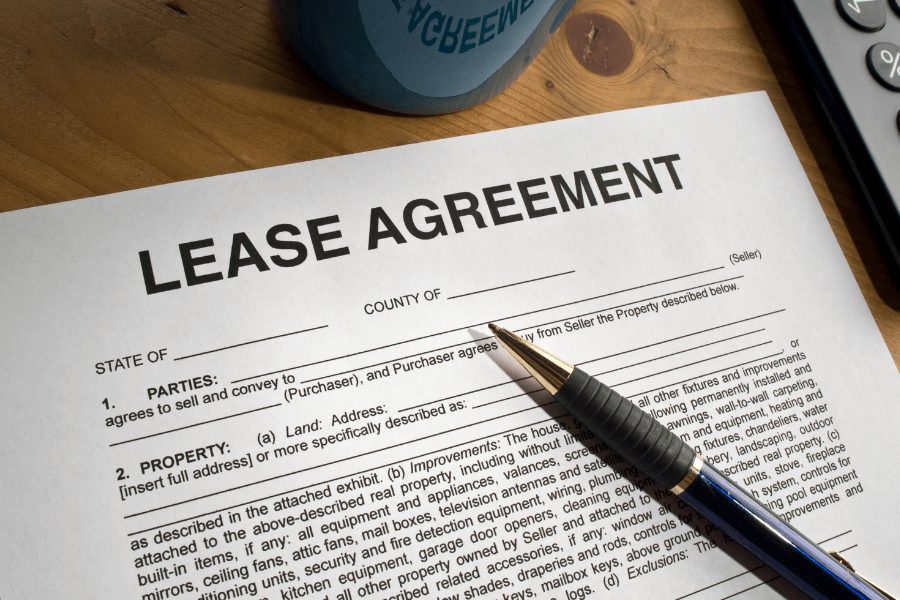Your Commercial Lease Agreement: A Tenant’s Guide
Businesses face enough uncertainty in today’s world, so savvy operators eliminate it whenever possible. Signing a lease agreement is one way to do that when renting a home or commercial property. This document outlines your rights and responsibilities as a tenant while providing legal protection against unforeseen circumstances, so the details it contains can significantly affect your profit margin.
A lease agreement is a document explaining all the rules and regulations you and your landlord must follow as you rent a property. The exact content varies because inclusions and omissions are part of the negotiation between the two parties.
Both the tenant and the landlord must sign the document, and it remains in effect for a predetermined time, at which point you can renegotiate it or move your business from the premises. Many lease documents feature in-depth provisions, so it’s vital that you carefully go over your agreement before signing it.
Your lease will include various rules, dates, and fees associated with your rental property, so you’ll want to make sure you have all the essential information and understand the content. This guide will take you through the importance of your lease agreement and touch on some information every version should include.

Why Lease Agreements Are Important for Tenants
It’s possible to rent a residential or commercial property without a written lease, but it isn’t recommended. These legal documents offer additional layers of protection and ensure your business doesn’t end up without an office or retail space unexpectedly because a landlord finds a better deal. Your lease also:
Identifies the Parties
Your lease agreement should start by clearly identifying the landlord and tenant. You might include your name and your company’s name on the lease, depending on the makeup of your organization, and the agreement should also identify the landlord or landlord’s agent.
Provides Information on the Property
Your lease should also present explicit information about the property, including its address. Adding a description of the building into the lease can also be beneficial.
Includes Costs and Important Dates
This document should include information on how much your leased building costs every month and when the agreement expires. These inclusions ensure you have protection against illegal rent increases and evictions throughout your rental agreement. Make sure you also understand your expenses and know your responsibilities at the end of the lease.
Having all this information in writing on a signed document can protect your organization from the unforeseen when changing locations. The more data your agreement includes, however, the harder it can become to go through all of it to understand what it means.
7 Clauses Your Lease Agreement Should Include
Many landlords have standard lease agreements they present to all their tenants. These documents generally cover all the essentials, but you’ll still want to ensure that you address specific topics to keep your company protected while renting the space. Your business might include written provisions on:
1. Additional Fees
There could be more fees than the actual rent amount, so you’ll want to be aware of them. You could be on the hook for maintenance, utility, and repair fees, and some landlords will penalize you if the rent is late. Having these fees in writing before you sign any documents helps you better understand your actual costs.
2. Security Deposits
You’ll likely be responsible for a damage deposit before moving into the building. You should have information on its amount, the date the landlord collected it, the bank where the deposit is held, and the interest rate. You’ll also want a list of reasons why the landlord can keep the deposit and the procedures for returning it.
3. Your Obligations
What are your obligations as a tenant? Some lessees are responsible for basic maintenance or repairs, and you might have to address any hazards on the property as well. Other responsibilities could include hiring any on-site security or contractors the property requires during your tenancy.
4. Rules on Parking
Defining where your employees and clients can park is an essential part of any lease agreement. You’ll want to know the location of your office’s parking spots and whether you’ll have to pay for these spaces. Information on parking passes and parking lot maintenance is also important.
5. Potential Sublets
There are situations where subletting part of your commercial building becomes necessary when you aren’t using the entire space or choose to downsize. Will your landlord allow this? Your lease agreement should include clear language on the possibility of sublets, including an overview of the tenant’s rights and responsibilities if it occurs.
6. Renovation Rules
Renovating or redesigning the interior of a commercial property is often a critical issue for tenants. You’ll want to cover these rules in your lease agreement, including information on how much you’re permitted to change and the condition you must leave the property in when moving out.
7. Information on Breaking the Lease
You could eventually run into a situation where you have no choice but to break your lease. Your lease agreement should include information on the protocols you’ll have to follow, including any penalties you’re responsible for paying.
Remember to add any of these clauses you feel are important before signing a lease agreement. You might need to negotiate with your landlord to ensure you have these protections, but it’ll be well worth the effort because of the safety it provides for your business.

Get the Assistance You Need for Your Next Real Estate Deal
Having a real estate pro on your side can make all the difference in your next deal. Nomadic Real Estate is the expert in D.C. real estate and property management.
We can help you find your next property or provide experienced management for properties you already own. Contact one of our experts to learn more about property management through Nomadic.



































